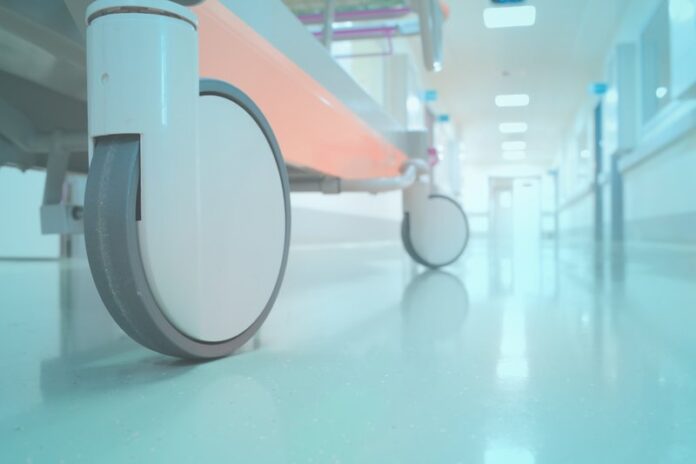By: DIGIRAD
Published: DIGIRAD
Date: June 28, 2019
The risks associated with patient transport
Typically, when a patient needs to move from their room in a hospital to receive treatments, tests or imaging elsewhere, they are not permitted to walk to those places themselves. Patient transport involves a healthcare worker taking them, usually via wheelchair or stretcher.
Transporting a patient requires knowledge, skill, good equipment and communication between patient and healthcare workers. Any of those things can break down and lead to injuries, ranging from minor scrapes to a traumatic brain injury or death, particularly as a result of a fall.
There are tens of millions of hospital admissions in the United States each year. Each of those represents a possible opportunity for a patient transport accident, even if each person is only moved once.
The prevalence of adverse events during patient transport is relatively high. Incidents happen often, although it is estimated that a large proportion of those go unreported. In one study, 45.8% of patient transports were associated with an adverse event, from minor to major. In another study, 67.9% of patient transports observed were associated with an “Unexpected Event.” These are some significant numbers – risk during patient transportation is a significant issue.
A study looking at the risks of patient transport for the critically ill highlighted a host of other risks besides transport accident. These include:
- Potential for infectious exposure
- Ventilator-acquired pneumonia
- Hypoxemia
- Pulmonary complications
- Tachycardia
- Cardiac arrest
- Arrhythmia
- Equipment dislodgement
- Interruption of therapy or care.
Particularly with critically ill patients, the risks of transporting them often outweigh the benefits. This creates a dilemma for clinicians, especially when imaging or testing is needed to help them form a thorough treatment plan.
Transporting someone who is critically ill can present more challenges, such as needing to transport therapy equipment with them and often requiring more healthcare workers for the process. Not only is it risky, but it is labor-intensive.
The risk of infection being spread via patient transportation is very well-known and very high. It has been noted repeatedly in hospitals where patients are moved between wards for non-clinical reasons, such as lack of space. Transfers hobble a hospital’s ability to contain infections and put both the transported patient and others whom they come directly or indirectly into contact with at risk.
Another review highlights that: “As the transfer of sick patient may induce various physiological alterations which may adversely affect the prognosis of the patient, it should be initiated systematically and according to the evidence-based guidelines.”
Increasingly, the Centers for Medicare and Medicaid are holding hospitals liable for any consequences as a result of patient transport. Given that hospitals are measured in many ways now, including patient outcomes, most are vitally aware of the risks involved with patient transport and have policies to mitigate them.
Source: https://www.digirad.com/how-hospitals-can-reduce-risk-by-limiting-patient-transportation-for-imaging/
Image: https://www.digirad.com/how-hospitals-can-reduce-risk-by-limiting-patient-transportation-for-imaging/
Analysis:
The article in addition to stating the risks associated to ventilator patient transport, points out the number of “unexpected event” of roughly 67.9%. Not only does this static stand on its own, but is the area of focus that I would like to further explore and minimize to reduce anything from be unexpected with a negative connotation, “the risks of transporting often outweigh the benefit”. In relation to overall safety and procedure guidelines to transport patients, there is a sense of liability upheld by Centers for Medicare and Medicaid. In doing so, the risks as mentioned will have a much closer sense directed to avoid an legal trouble that may result from the “unexpected events”. The opportunity that can be explored is the area in which when monitoring each patient that there is no questionable concerns or lack of communication between the equipment and medical staff.




